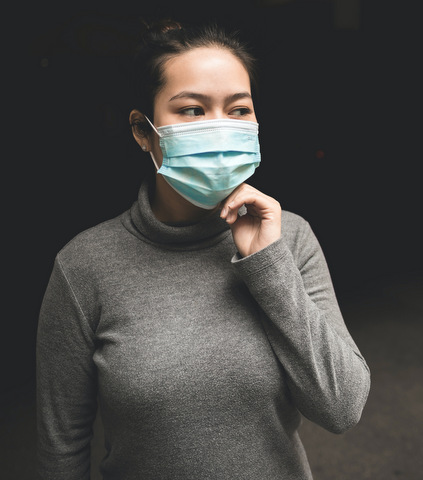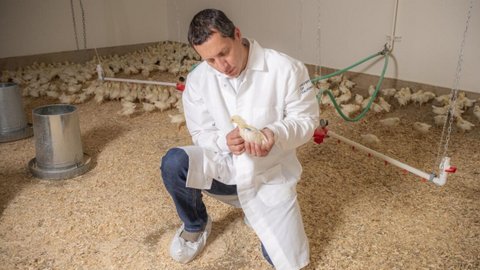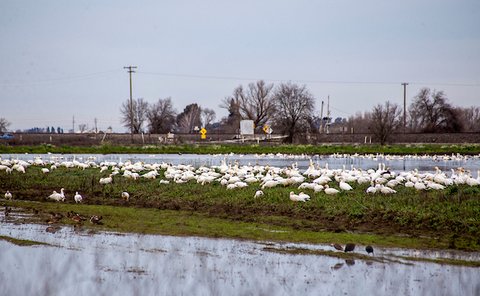
06 Apr Wear a Mask! OK, But What Kind?

By Julie Cart,CalMatters | Photo by Michael Amadeus on Unsplash
The Centers for Disease Control and Prevention on Friday recommended every American wear a face mask while in public to protect against contracting coronavirus.
The agency announced that non-medical fabric masks – even scarves or bandannas – could help slow the spread of the infection. State health officials earlier in the week made the same recommendation.
The ever-evolving response to the coronavirus pandemic has amped up the need for keeping everyone safe from the virus.
That means wearing masks.
What is the purpose of a face mask?
It depends on who is wearing it.
Humans have long covered their faces to ward off disease, and medical masks have a long and colorful history .
For most of the public and some healthcare workers, “the main purpose of a mask is not to protect yourself from others, but to protect others from you,” said Bill Padula, an assistant professor at the University of Southern California’s School of Pharmacy.
Padula, who studies patient and worker safety in hospitals, said medical masks are designed to protect the wearer from contact with an infected patient.
“It isn’t simply thinking about what I have to do for this patient sitting in front of me, but ‘How do I treat this patient, with respect to the next 10 patients who walk into this clinic?’” he said.
In its new guidelines set Friday, the CDC said studies have shown that “a significant portion” of people with the virus have no symptoms and can still spread the virus. “In light of this new evidence, CDC recommends wearing cloth face coverings in public settings where other social distancing measures are difficult to maintain (e.g., grocery stores and pharmacies) especially in areas of significant community-based transmission.”
Which masks are in short supply?
The highly-contagious coronavirus requires doctors, nurses and other clinicians to take extra precautions when treating patients. With more than 1 million people worldwide infected, there is a critical shortage of N95 masks and surgical masks — the types worn by healthcare providers.
The N95 respirator mask is a polymer cup designed to fit snugly to the face to form a seal, and filters out nearly 95% of airborne particles. The federal government suggests they not be reused or shared.
In contrast, surgical masks are made with multi-layered fabric, commonly pleated, with bands that hook over ears, and are worn loosely. They are designed to provide a physical barrier that prevents the spread of germs from person to person.
They also are not intended to be used more than once.
But in both cases, hospital officials in hard-hit cities such as New York have rationed the masks and are washing and reusing them.
The situation is made worse by the fact that about half of the world’s supply of medical masks is manufactured in China, with many of the factories located in Wuhan, thought to be the epicenter of the coronavirus outbreak.
What about other types of masks, will they work?
In many fire-prone communities around California, homeowners and local community emergency agencies maintain stocks of masks intended to protect the wearer from wildfire smoke.
Some of these are known as P95 masks, often recommended by fire officials for use by residents during wildfires. The masks — sometimes referred to as dust masks — are fitted with a small carbon filter, designed to protect against oil-based particles.
They work well in many applications, but are not considered medical-grade masks and are “not commensurate with current U.S. standards of care,” according to the Centers for Disease Control and Prevention.
Federal guidelines go on to say, however, that P95 masks, alone or in combination with other measures, are acceptable when there are shortages of N95 respirators. “These devices are expected to be suitable alternatives to provide protection during the COVID-19 response when supplies are short,” the CDC guidelines say.
The guidelines do not say why P95 masks, which block the same percentage of particles as the others, do not meet federal standards for health care workers. It is likely that they have not been fully studied to ensure that their filtration ability, seal and other factors meet the needs of hospitals, since they were not designed for that use.
How about donating those wildfire masks to hospitals and local clinics?
Napa City Council Member Liz Alessio organized a local donation drive that gleaned some 45,000 masks, the bulk of them surgical masks but some from people’s stocks of P95 masks.
The region’s vulnerability to wildfire meant that “folks had masks in their homes and businesses,” Allesio said. “There’s a lot more out there.”
Health care officials are most appreciative.
“We are humbled by the outpouring of support we have received from our communities and business partners to help source additional supplies,” healthcare HMO Kaiser Permanente said in a statement to CalMatters.
But the company said it was organizing a donation network and discouraged people from bringing donations directly to medical centers.
The California Department of Public Health told CalMatters that while the P95 fire masks are “highly effective,” it is “up to the individual medical institution to decide if they are acceptable for use by personnel.”
At least one hospital told Allesio that it would not be able to use the donated P95 masks because they didn’t meet the hospital’s requirements.
Medical masks are regulated by the Centers for Disease Control and Prevention, the National Institute for Occupational Safety and Health and the federal Occupational Safety and Health Administration.
The state launched a website where individuals and companies can donate or sell scarce medical supplies, including masks. The site specifically mentions N95 and surgical masks only.
Ok, what are the rest of us supposed to do?
Before this week, officials downplayed the need for most people to wear masks when they are out in public, provided they practice appropriate physical distancing. Then, as it became more clear that there are unknown numbers of asymptomatic people officials are now urging everyone to use face coverings, as well as remain at least six feet apart.
There is a wide variety and many gradations of face masks anyone can use, including rudimentary paper dust masks, often used for home DIY projects.
Barbara Ferrer, director of the Los Angeles County Public Health Department, said that for most people, a homemade mask using tightly woven cotton fabric, a bandanna or scarf affords sufficient protection.
“There really is no need for anyone in the public to go and secure N95 masks, I beg you not to,” she said. “They are needed by medical workers or health care workers.”
CalMatters.org is a nonprofit, nonpartisan media venture explaining California policies and politics.






tyana
Posted at 01:30h, 17 MayLocal company is making mask
https://www.greatamericandrycleaners.com/order-mask